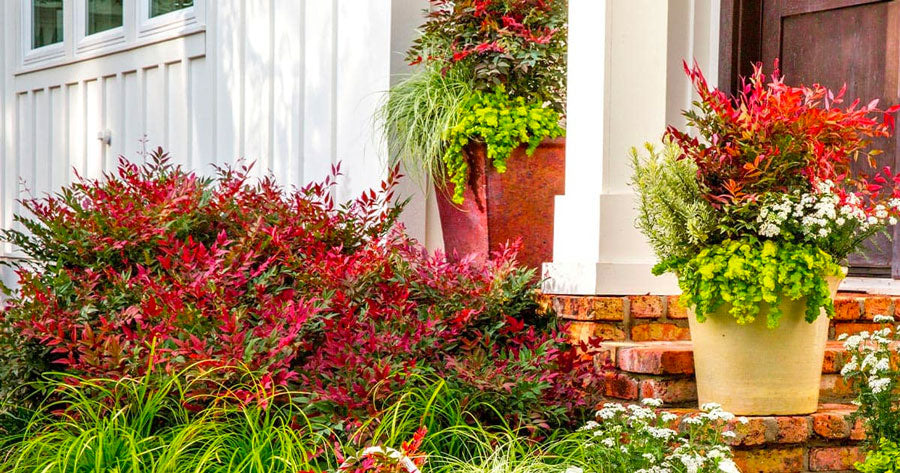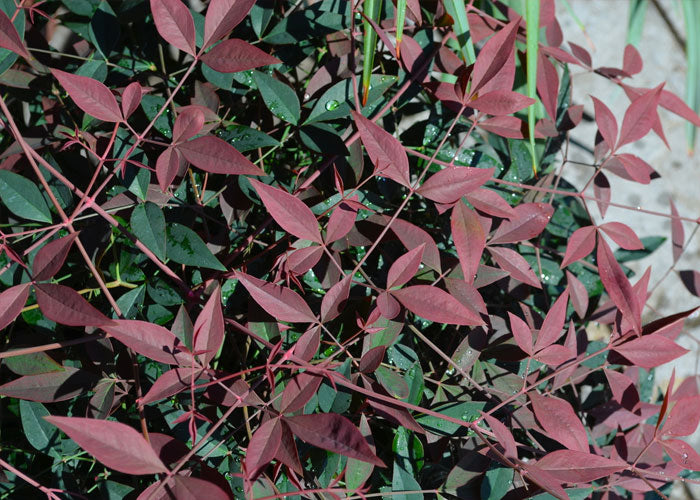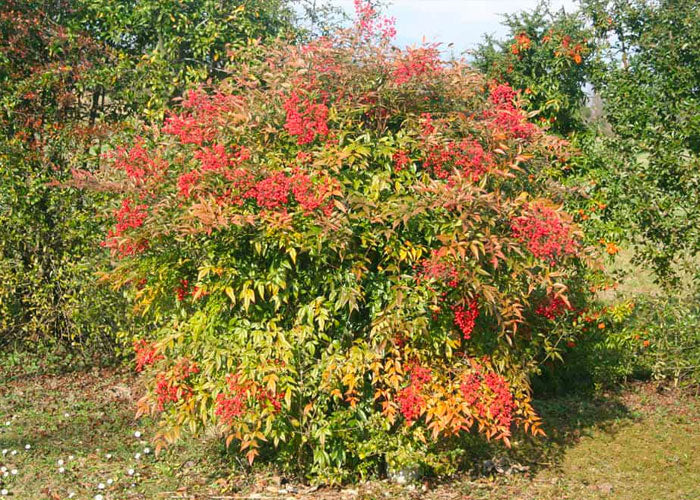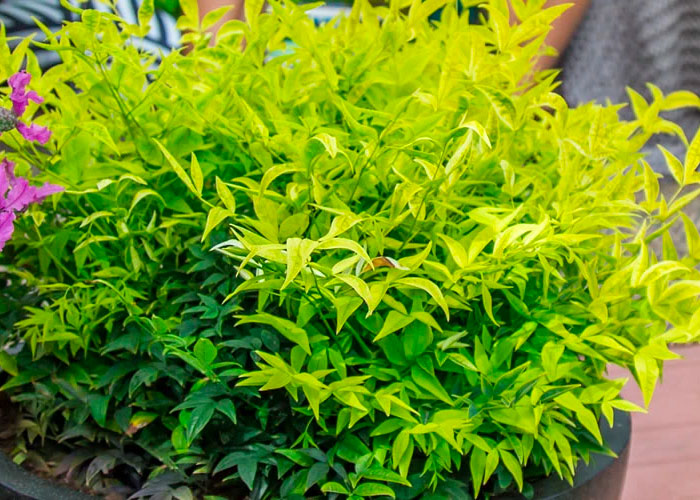What You Need To Know About Nandinas

When to Plant Nandina
Planting Nandina bushes in spring or fall is ideal. Warmer climates with mild winters can plant in winter. Cooler climates are better off planting in summer than late fall.
How to Plant Nandinas
Plant Nandinas in full to part sun. When planting Nandina shrubs, dig a hole twice the width of the root ball and not quite as deep as the root ball is tall. Place the bush evenly in the hole. Be sure the top of the root ball is slightly higher than the existing soil line and backfill with the soil you dug out. Water deeply until the water begins to pool on the ground surface. Apply 1 to 2 inches of mulch to reduce watering needs and weeds. Water daily for the first week and 1 to 3 times weekly for the first 2 months until your plant is established. Note: Nandinas are toxic to pets.
How to Care for Nandinas
Nandina care is minimal once plants are established. Theses evergreen bushes are adaptable to just about any well-drained soil. Water deeply when planting and twice weekly for the first 2 to 3 months while your new plant is establishing. After establishing, nandina plants are very drought tolerant and will only need watered during extremely hot and dry conditions. 1 to 2 inches of mulch is a great option to prevent weeds, keep the soil cool and moist, and protect the roots during extreme temperatures. Fertilize in spring with a general purpose, slow release fertilizer.
How to Prune Nandina
While Nandinas, especially dwarf varieties, rarely need pruning, on occasion larger plants will become overgrown and leggy or thick and dense. Renewal pruning can improve the look of these plants. For overgrown dense plants, prune back the oldest and thickest canes back to the ground. For leggy plants remove the older canes that have little foliage all the way back to the ground. Remove up to ⅓ of the plant per year.
When to Prune Nandina
Nandinas do not require pruning, but can tolerate heavy pruning if needed. Prune any time of the year. If you are performing severe pruning, late winter or early spring is the best time.
Featured Nandina Varieties
 Nandina domestica 'Firepower'
Growing Zones 6, 7, 8, 9, 10
Mature Size: 2 to 3 feet tall and wide
Nandina domestica 'Firepower'
Growing Zones 6, 7, 8, 9, 10
Mature Size: 2 to 3 feet tall and wide
Add some bold color to your landscape with the Nandina Firepower. Greens, yellows, and reds are seen throughout the year on this hardy, evergreen shrub. This dwarf Nandina is versatile in the landscape.
 Nandina domestica 'Murasaki' PP21391
Growing Zones 6, 7, 8, 9, 10
Mature Size: 1 to 2 feet tall and wide
Nandina domestica 'Murasaki' PP21391
Growing Zones 6, 7, 8, 9, 10
Mature Size: 1 to 2 feet tall and wide
The Flirt Nandina is the smallest of the dwarf Nandinas. It can fit anywhere and is gorgeous in pots. You'll love this plant as a vivid border. With red, purples, and greens, this dwarf evergreen plant offers a color punch that is hard to beat.
 Nandina domestica
Growing Zones 6, 7, 8, 9, 10
Mature Size: 6 to 8 feet tall and 3 to 4 feet wide.
Nandina domestica
Growing Zones 6, 7, 8, 9, 10
Mature Size: 6 to 8 feet tall and 3 to 4 feet wide.
The Nandina Heavenly Bamboo is the one that started it all. This colorful shrub makes a truly unique hedge, accent, or specimen plant.
 Growing Zones 6, 7 ,8, 9, 10
Mature Size: 3 to 4 feet tall and wide.
Growing Zones 6, 7 ,8, 9, 10
Mature Size: 3 to 4 feet tall and wide.
Brilliant, sharply contrasting yellow and green make the Nandina Lemon Lime a huge hit. This stunning Nandina variety makes a vibrant hedge or foundation planting.










